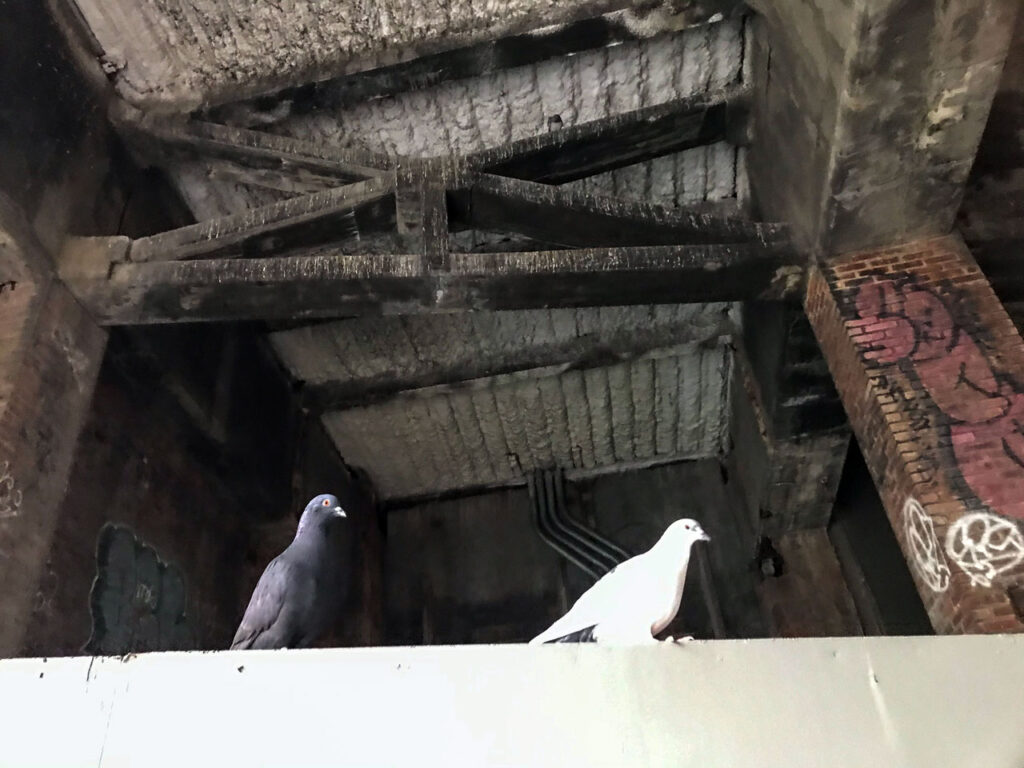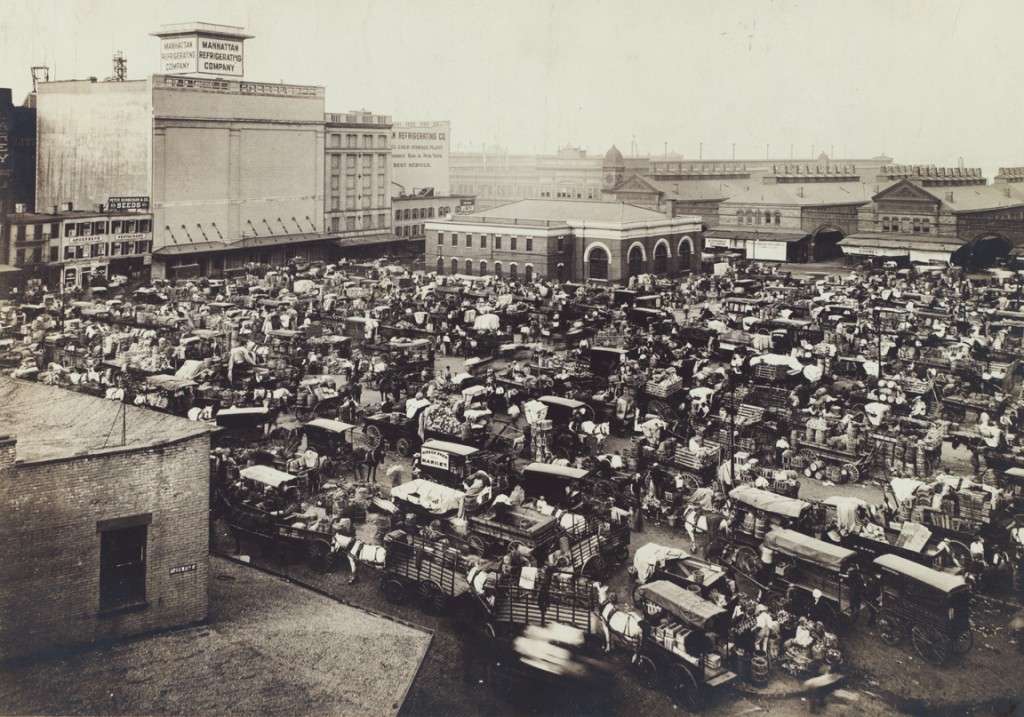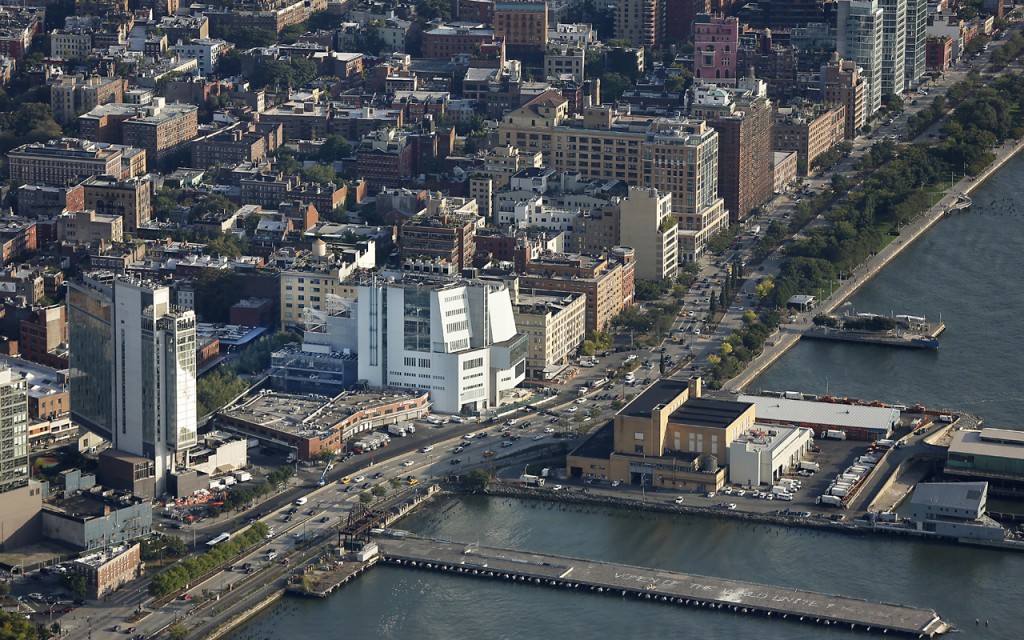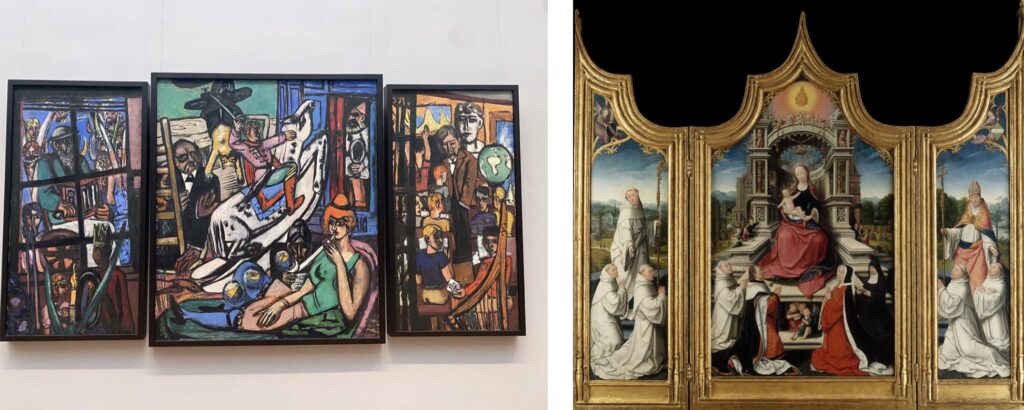I confess to loving them, and this weekend — Saturday is National Pigeon Day, in case you’ve head your beak in the sand — is Pigeon Fest on the High Line. Last year I posted some of my favorite pigeon photos and the link is here:

I confess to loving them, and this weekend — Saturday is National Pigeon Day, in case you’ve head your beak in the sand — is Pigeon Fest on the High Line. Last year I posted some of my favorite pigeon photos and the link is here:

John Singer Sargent is best known as a portrait painter, and the blockbuster new show at the Met is filled with faces that intrigue and astound. The most striking is Edouard and Marie-Louise Pailleron, from 1880. The wall text tells us that Marie-Louise, who dominates the picture with her defiant self-confidence, was 11 years old and claimed that she and her brother endured 83 sittings during which she battled with Sargent over her attire and pose. The story is likely apocryphal, but look at that face and tell me it’s not believable!

My favorites, though, are the two paintings that capture not only people but music. For Rehearsal of the Pasdeloup Orchestra at the Cirque d’Hiver Sargent, a talented pianist and lover of modern French symphonic works, especially those of Gabriel Fauré, puts himself in a seat high above the orchestra and captures the energy of the musicians and almost the music they make. It’s that evocative.

Capri Girl on a Rooftop, made in 1878, shows a scene described by Sargent’s friend Frank Hyde, who recalled rooftop parties where local women performed “tarantellas on the flat roof…We watched the effect of the graceful figures, silhouetted against the fading twilight, and, for a background, Vesuvius with his dark purple mantle and crown of fire.”

But the show-stopper here is Madame X, a notorious painting that comes with a backstory and has its own gallery. In Sargent’s first version of this painting of Virginie Amélie Avegno Gautreau her sparkling shoulder strap sexily slips off her right shoulder, but he later painted the strap back in, after the picture caused an uproar during the 1884 Salon. Below is my photo of the exhibition’s curator, Stephanie L. Herdrich, speaking at the press preview on April 21st. As the assembled crowd quieted down she began her remarks by noting that here she was, “standing in front of my sidekick, Madame X.”

This is a beautifully designed and curated show, and that it culminates in a gallery devoted entirely to the story of Madame X is just another gift to museum-goers. Titled “The Paris Salon of 1884,” this space recreates the original exhibition using projections of paintings that were shown during that year. I arrived early, and to my enormous delight found this spectacular woman, dressed to nines in 3″ heels, a short black dress with a large pink bow, her cape drooping sexily down her shoulders and a classic string of pearls around her neck:

When Sargent sold Madame X to the Met in 1916 he wrote that this portrait was “the best thing I’ve done.” A hundred and ten years later, his famous painting has found a new, widely appreciative audience. Run, don’t walk.

I never saw so many people taking a selfie with a pigeon but I understand why: this bird is truly magnificent. Thank you Iván Argote for “Dinosaur,” and High Line Art for choosing this iconic New Yorker for The Plinth. To read my tribute of pigeon photos on the High Line, click here….
It’s been almost ten years since an artwork appeared on the 18th Street Billboard, one of my favorite public art platforms in the city. (Earlier this month I looked back on photos of pigeons I’ve taken since the park opened, in anticipation of the next work in my other favorite spot, The Plinth. Iván Argote’s Dinosaur is coming there in September.)
On September 3rd, Glenn Ligon’s Untitled (America/Me) will go up at 18th Street, and in anticipation of the billboard’s return — what happy news! — I’m posting some of my favorites from across the years, with hearty thanks to Cecilia Alemani, chief curator and High Line Art director, for bringing back this singular exhibit space. These are in no particular order, except I’ve started at the beginning, with Joel Sternfeld, the High Line’s muse.
For a look at other works — including opera, sculpture, and more — visit my companion website, HighLineBookcom.









I love The Plinth, the High Line’s public art platform that stretches across Tenth Avenue at 30th Street. In honor of the just-announced, upcoming (in October) commission — a giant pigeon by artist Iván Argote titled Dinosaur — I’m posting some of my favorite pigeon-on-the-High Line photos from the past 15 years. They show up everywhere, in all the iconic places, and are our true neighbors in New York City. I admit to loving them.












A new, 3rd, edition of On the High Line has just been published by Fordham University Press / Empire State Editions, and it’s in many ways an entirely new book. I built a companion website that has more than 650 photos — historic, contemporary, aerial and rooftop — at HighLineBook.com, and you’ll find lots more information about the book there.
During the course of my research I learned a lot more about the history of this landscape so many of us love so dearly, and I wanted to share one story that particularly captivated me. I’m pretty sure that the very first essay I wrote as a child was about the Triangle Shirtwaist Factory fire, so in a way I’m coming full circle here. To begin, have a look at the Gansevoort Pumping Station in the first decade of the 21st century; it’s the handsome brick building in the center of the farmers’ market:

Designed by the architectural firm Bernstein & Bernstein, this station had five pumps, each of which could deliver 2,700 gallons a minute through the city’s High-Pressure Hydrant system, which was developed in 1909. On Saturday, March 25, 1911, workers at this station were notified of a devastating fire at the Triangle Shirtwaist Factory in Greenwich Village, and the FDNY raised the water pressure in the hydrant system to help members battle the fire in a building that no sprinklers. One hundred and forty-six garment workers were killed that day, including 123 women and girls, many of whom were young Italian, Eastern European, and Jewish immigrants.

In later years the Gansevoort Pumping Station became a cold-storage warehouse, part of the municipally operated Gansevoort Market Meat Center, and in 1984 Premier Veal moved in. Efrain Gonzalez’ photo below shows how it was soon decorated by a Lower East Side graffiti artist who painted murals of cows on the sides of the building. These were, in later years, targeted with paintballs by animal activists.

The station was torn down in 2011 to make way for the new Whitney Museum. Sitting below that magnificent building on Gansevoort Street, designed by architect Renzo Piano, is another layer of High Line history.

A number of years ago I took this photo of a woman painting a painting of a woman painting a painting in the European paintings wing of the Metropolitan Museum.
I thought of her yesterday morning when I had the great joy of attending the Met’s press preview in advance of the re-opening of the European Paintings Galleries, which the museum’s director, Max Hollein, described as “a completely new re-hang,” in which the curators “gave renewed attention to women artists” and took into account histories of class, gender, race, and religion. The goal of the show “Look Again: European Paintings 1300-1800″ was to create new cultural and artistic dialogs outside the more traditional focus of national schools of art and geographic distinctions. The galleries have been closed, for the most part, over the past 5 years as the Met renovated the many skylights — they embrace a total of 30,000 square feet — that make this wing so distinct. It was a beautiful, sunny morning and every space was filled with natural light. I had to lie on a bench to get this shot (you can see my left sneaker peeking out…) and the security nicely ignored me as I made myself comfortable. This is a place I’ve loved since childhood.
You need a lifetime to appreciate the nearly 800 works in these 45 galleries, many of which have been restored or borrowed from other departments in the Met. (According to curator Stephan Wolohojian, they extend over 2 acres and represent 9,000 gallons of paint.) My favorite gallery is “The Artist’s Studio,” which features ten paintings made between 1538 and 1955 showing the creative work in process. The featured work is Kerry James Marshall’s monumental “Untitled (Studio),” and also includes a few works by women, including a wonderful self-portrait by Elaine de Kooning (from 1946).
Most striking about this new wing is the adjacencies the Met’s curators achieved, which feel surprising and modern in a space that also feels unequivocally timeless. There are too many to mention, but a stunning example is Picasso’s “The Blind Man’s Meal” from 1903, which hangs next to El Greco’s “The Vision of St. John.” Another pairing, on the same wall, puts Picasso’s “The Actor” (1904-05) next to El Greco’s “Saint Jerome as Scholar” (1610).
In another gallery, Max Beckman’s modern triptych, “The Beginning” (1946-49) hangs side-by-side with Jean Bellegambe’s “The Cellier Altarpiece” from 1509.

The new galleries, filled with old favorites and new surprises, open on November 20th.
This week the newest park in the Hudson River Park system, Gansevoort Peninsula, opened on the former Pier 52, just south of Little Island and across the highway from the Whitney Museum. I will be writing more about this place, and its long, strange, history, but for now I offer some pictures and a few thoughts.
If you’ve lived in New York City for your entire life, as I have, the idea of a beach in Manhattan is pretty outrageous. I was dubious about this one from the moment it was announced several years ago, but going there on a hot, sunny day and seeing the happiness abounding — in folks of all ages — had a softening effect. This place is a little miracle.
The best part of Gansevoort Peninsula can’t be experienced through photographs: it’s the sound of the waves of the Hudson River lapping against the rip-rap. Yes, there’s garbage and all kinds of junky stuff washing up with the water, but this is New York City. We expect that. Soon there will be droves of kayakers, paddle boarders and kite surfers stepping off the broad, smooth stones that were placed here for easy launching into the river.
Another thing I love about this park is the way David Hammons’ “Day’s End” sculpture, a work that memorializes the history of the piers in West Chelsea, casts its long shadow across the beach. It’s here, but not here, just like the pier it replaced. And lest you forget you’re in New York City, the park’s designers have helpfully placed a manhole cover at the western edge of the beach, in the boardwalk. See photo below and, as always, click to enlarge the image.
But my favorite part of Gansevoort Peninsula is its history. Soon I’ll be sharing more photographs, including some rare images I found in the Municipal Archives, and telling the fascinating and truly strange history of Thirteenth Avenue. This park occupies the last patch of the lost avenue, and its history is truly remarkable. More soon.